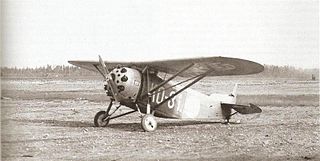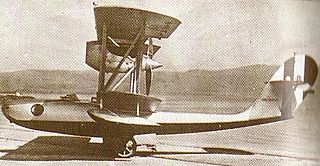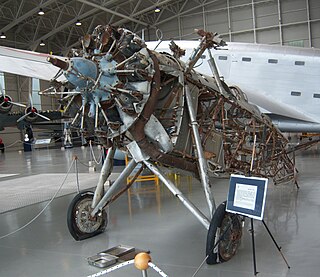
The Albatros D.IV was an experimental German fighter aircraft built and tested during World War I.

NVI F.K.31 was a Dutch designed parasol wing two seat reconnaissance-fighter, which was developed in the 1920s by Frederick Koolhoven. The aircraft saw some service in the Finnish Air Force.

The Fiat CR.25 was an Italian twin-engine reconnaissance-fighter aircraft which served in small numbers for the Regia Aeronautica during World War II.

The Caproni Vizzola F.5 was an Italian fighter aircraft that was built by Caproni. It was a single-seat, low-wing cantilever monoplane with retractable landing gear.

The Piaggio P.119 was an Italian experimental fighter of World War II. It had a relatively novel layout, with a "buried" radial engine mounted mid-fuselage. Only a single prototype was built before the Armistice between Italy and the allied armed forces, which ended the project.
The Piaggio P.32 was an Italian medium bomber of the late 1930s, produced by Piaggio, and designed by Giovanni Pegna. It was a modern design for its time, but was a failure due to lack of powerplants commensurate with its high wing loading.

The IMAM Ro.51 was an Italian fighter aircraft that first flew in 1937. It was designed for the 1936 new fighter contest for the Regia Aeronautica, with practically all the Italian aircraft builders involved.

The IMAM Ro.57 was an Italian twin-engined, single-seat monoplane fighter of the Regia Aeronautica. Based on a 1939 design by Giovanni Galasso the aircraft did not enter production until 1943.

The Caproni Ca.114 was a fighter biplane produced in Italy in the early 1930s which was flown operationally in Peru in the 1930s and 1940s.

The CANT 25 was an Italian shipboard single-seat sesquiplane flying boat fighter that entered service with the Regia Aeronautica in 1931.

The SIAI S.52 was an Italian fighter prototype of 1924.

The Caproni Ca.70 was a two-seat night fighter and ground attack biplane produced in Italy in 1925. It was the only Italian aircraft designed from the outset as a night fighter.

The Caproni Ca.71, originally Ca.70L, was a two-seat biplane night fighter produced in Italy in 1927. It was derived from the Caproni Ca.70 of 1925.

The Caproni Vizzola F.4 was an Italian fighter aircraft prototype that was designed in 1937 and built from 1939. It was a single-seat, low-wing cantilever monoplane with retractable landing gear.

The Caproni Vizzola F.6 was a World War II-era Italian fighter aircraft built by Caproni. It was a single-seat, low-wing cantilever monoplane with retractable landing gear. Only two prototypes were built, one designated F.6M and the other designated F.6Z.

The Caproni Ca.331 Raffica was an Italian aircraft built by Caproni in the early 1940s as a tactical reconnaissance aircraft/light bomber and also as a night fighter.

The Piaggio P.2 was an Italian fighter prototype of advanced design built by Piaggio in 1923.

The Marchetti MVT, later renamed SIAI S.50, was an Italian fighter of 1919 and the early 1920s.

The Macchi M.26 was an Italian flying boat fighter prototype of 1924 designed and manufactured by Macchi.

The Piaggio P.IX, or Piaggio Stella P.IX, was an Italian nine-cylinder radial aircraft engine produced by Rinaldo Piaggio S.p.A. Based on the Gnome-Rhône 9K, the engine was rated at 600 hp (447 kW). Production was used to power a number of other aircraft developed in Italy. The main users were the Savoia-Marchetti SM.81 transport and the IMAM Ro.37bis, the main reconnaissance aircraft in the Regia Aeronautica during the Second Italo-Ethiopian War, Spanish Civil War and Second World War, but the engine was also used by other designs, including the prototype Savoia-Marchetti SM.79.



















